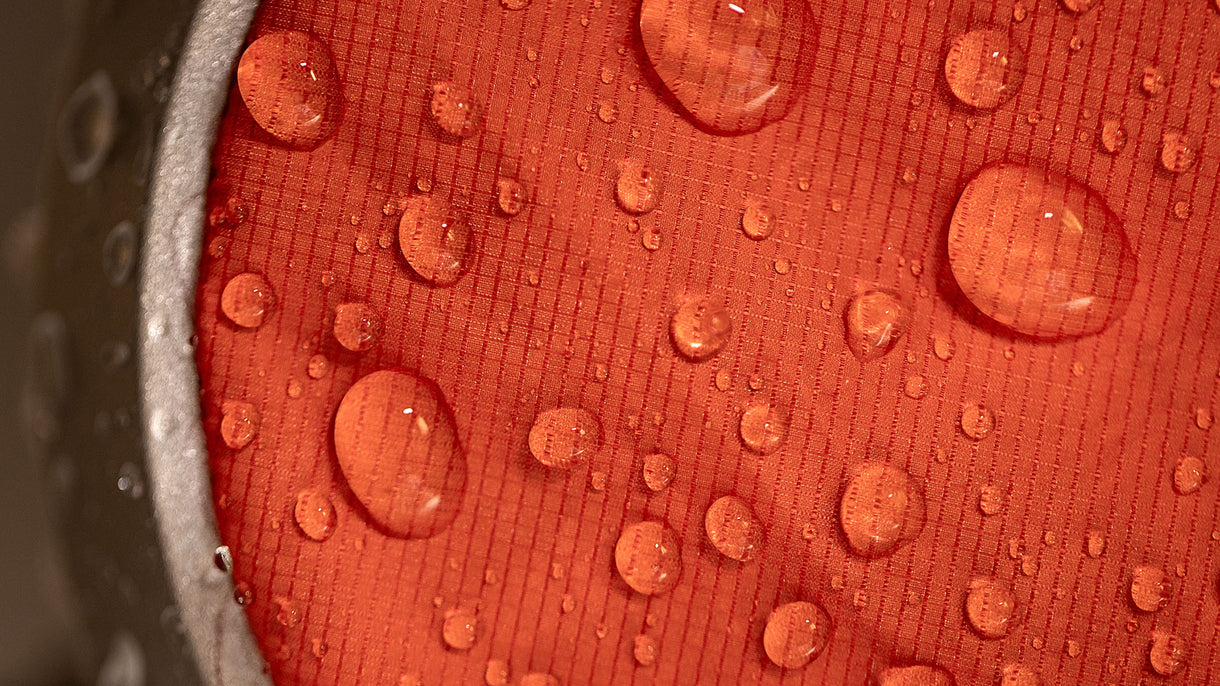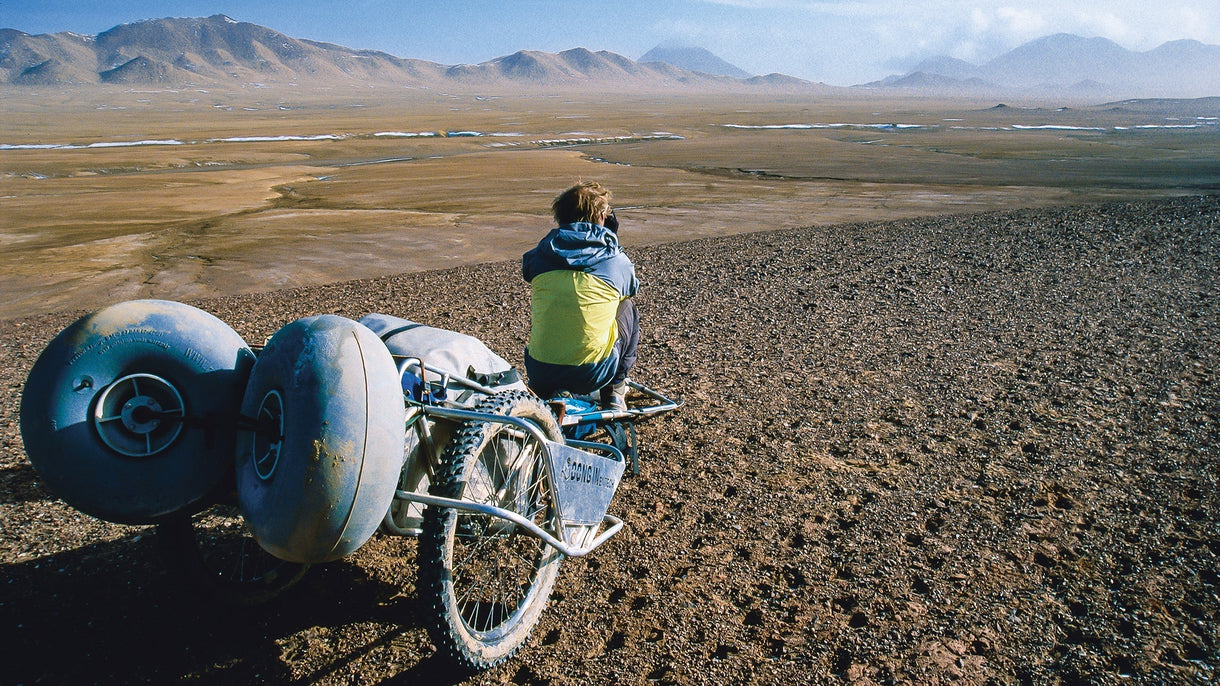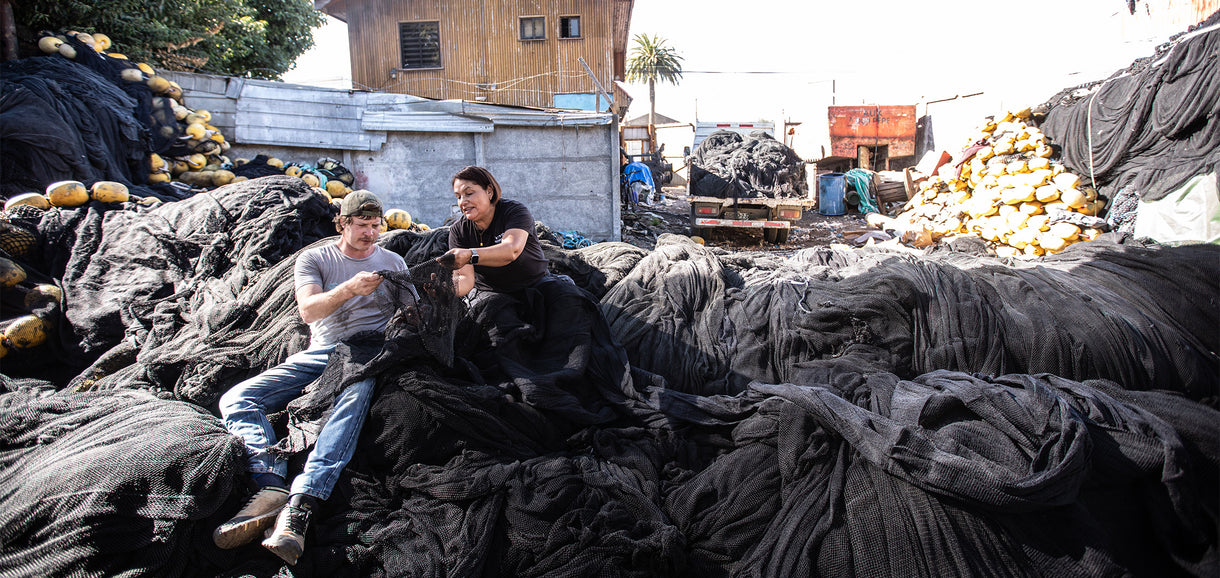The zipper is one of the most elegantly functional features in design. It’s also one of the most frustrating barriers to fully recycled, easily repairable gear.
Austin Robbs thinks zippers are perfect. That’s exactly why he hates them.
As Patagonia’s equipment product director, Robbs is very familiar with the 150-plus-year-old contraption. He uses them every day while designing high-performance outdoor backpacks, duffels and sleeping bags, and knows their supremacy over other closure options like buttons, Velcro or magnets. He also knows that broken zippers are nearly impossible to repair and a nightmare to replace.
“I’ve got a very long-running disdain for them, but the problem is they’re perfect at what they do,” Robbs says. “There’s nothing better, but every time I put a zipper on a backpack, it’s like putting on a countdown. I know that’s the first thing that’s going to fall apart.”
Part of the issue is a zipper’s construction: A track of teeth, made of plastic, nylon or metal, is molded or bonded into zipper tape, which is then sewn into the surrounding fabric. The teeth on one track are designed to line up with the corresponding grooves on the other, locking and separating as the slider brings them together. It’s a subtle and elegant design, and notoriously short-lived.
“If you think about the engineering that goes into making a zipper work: all these interlocking teeth could get tweaked out, or caught in some fabric, or just miss one tooth and get kinked – eventually it’s going to fall apart,” Robbs says. “Sand and dirt wear them down, and there’s no at-home remedy. You can change out the Velcro on your cuffs, you can patch holes in your elbows, but when the zipper goes, it’s done.”
How easy a zipper is to replace largely depends on how it was installed. For example, if the zipper tape on a down jacket was stitched or glued directly to the body fabric, then removing that stitching will also open the edge of the down chambers. And while an explosion of feathers may seem benign, working with large amounts of down is so difficult it requires specialised, negatively pressured rooms.
“It’s a battle to deal with,” Robbs says. “It’s like glitter: Once down gets free, it will float around indefinitely, and if there’s any wind it goes everywhere really fast.”
 Even when it’s possible to repair a damaged zipper, doing so can be a surgical process. Luckily, the technicians at the Patagonia repair center in Reno, Nevada, have steady hands. Photo: Keri Oberly.
Even when it’s possible to repair a damaged zipper, doing so can be a surgical process. Luckily, the technicians at the Patagonia repair center in Reno, Nevada, have steady hands. Photo: Keri Oberly.
There was one project to which this issue was particularly relevant: designing Patagonia’s first sleeping bag. The priorities for the bag – lofty warmth, low weight, highly compressible – were fairly predictable, all of which benefited from the company’s decades-deep experience with down jackets. But some of the team’s most subtle innovations were born from focusing on both the bag’s demise and any future repair technician’s sanity.
“There aren’t many parts to a sleeping bag; the only thing that’s going to wear out is the zipper,” Robbs says. “And to fix that, you’re either going to have to remove all the down, contain it somehow, and then put it all back in – or you have to build it a bit differently, so it’s as easy as pulling the old zipper out and putting a new one in.”
Gilbert Valdez’s entire job revolves around such preemptive problem-solving. Valdez is a quality insight strategist at Patagonia, and has been repairing and replacing broken zippers for half a decade – first as a tech at the repair center in Reno, Nevada, then as a quality auditor inspecting pre-production samples. All the time spent fixing old products has given Valdez a keen insight into potential issues in new products, many of which stem from forgetting to include repair-friendly details in the manufacturing specifications.
“There’s this gap between production and manufacturing when it comes to repairability,” Valdez says. “Our suppliers are going to follow the exact specs we give them, and if production misses one step, then taking out that zipper is going to be a nightmare. Unless you’ve pulled a product apart and tried to repair it, you’re not going to connect those dots.”
That sort of forethought can allow designers to avoid such problems altogether, with hardly any changes to the end product. Some duffel bags and backpacks, for example, have a completely finished interior liner, meaning there’s no way to access the seams and thus no way to replace the zippers. By simply adding a binding to the liner, the designer gives the repair tech a way to reach the seam and the customer will never notice the difference.
“It’s changing the mindset from if it comes in for repair to when it comes in for repair,” Valdez says. “We have to start thinking every product will be repaired eventually for some reason and being more innovative on how to make every little trim piece, every little zipper and every buckle replaceable. We do it with some products, but now it’s just pushing it to all of them.”
 Not all broken zippers are an apparel death sentence, which is why the Worn Wear crew is always stocked for a resurrection with a whole spectrum of replacement zippers. Photo: Donnie Hedden.
Not all broken zippers are an apparel death sentence, which is why the Worn Wear crew is always stocked for a resurrection with a whole spectrum of replacement zippers. Photo: Donnie Hedden.
Besides being a mess to replace and one stitch from releasing the outdoor apparel version of glitter, zippers have another downside: They’re damn near impossible to recycle. While there are a few recycled models on the market, most are too soft for the abusive needs of technical outdoor gear. If there was, however, it would open all new possibilities.
“If you could make a recycled polyester or nylon that’s hard enough, then you could make the whole jacket out of the same material and, in theory, just throw the whole thing in the chipper and recycle it – kind of a cradle-to-cradle product,” Robbs says. “But the tape, the thread and the zipper all need to be made out of that same material; if they’re not, you have to pull all those pieces apart and put them in separate recycling bins.”
Until that happens, zippers remain the best option for designers like Robbs – a frustratingly wonderful and necessary evil.
“It’s just a love-hate; I don’t want to get rid of them, I just want to evolve past them somehow,” he says. “It’s a miracle product, but who knew a miracle product would be such a pain in the ass?”
Banner image – Every piece of gear will eventually wear out, and it will likely be the repairability of a zipper that decides its fate. Designer Casey Shaw and climber Steve House examine the crux of a new jacket's longevity. Ventura, California. Photo: Kyle Sparks.
____________________________________________________________________
Author Profile
























































